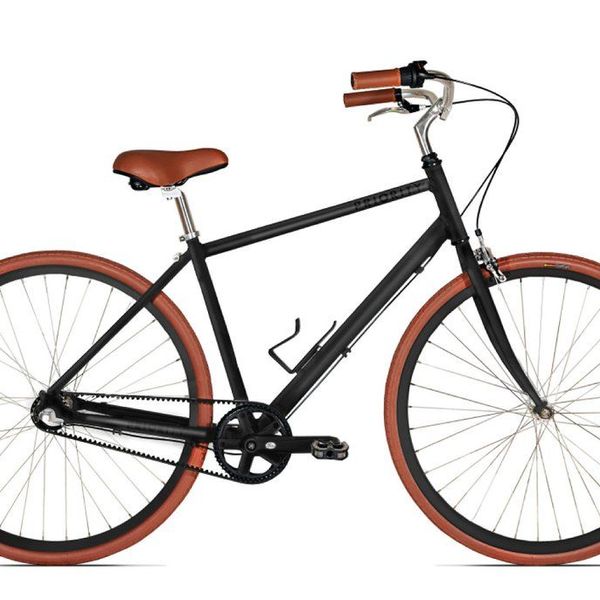Cycling industry in China
The domestic share of the bicycle industry has developed rapidly. As of March 2017, the total financing amount of the shared cycling industry in China reached 7 billion Yuan, there are more than 30 bicycle brands, the industry competition is increasingly fierce. The sharing of bicycles has become a hot topic in China at present.
Reduction of CO2 emissions
Nowadays, the city air pollution is more and more serious, haze weather increased year by day, the environmental situation is not optimistic, even in the subway, bus and other traffic network coverage of the increasingly perfect first-line city, there are still ‘from the platform to the final destination kilometer’ problems. At this time, the emergence of shared bicycles, effectively improved the environment and traffic problems, and then successfully promoted the city image (China Business & Trade, 2018, 11). First, cycling travel as a green means of transport, its environmental benefits are obvious: according to the company’s data show that bicycles in lieu of cars, the average reduction of gCO2 emissions per kilometer ; second, the sharing of bicycles as an increasingly perfect urban transport network effective supplement, its free and flexible leasing mode is able to provide services for 1-3 km of short trips, in line with the existing public transport system, the formation of ‘point-to-point’ transport services to improve the accessibility of existing public transport systems, and played a role in alleviating urban traffic congestion.
The operation of renting a shared bicycle
The operation of renting a shared bicycle is simple: The users login through the mobile phone number and the verification code in the app client, and send a deposit after the 99~299 Yuan to obtain the right to use the vehicle, and then use the vehicle location information to find parked in the vicinity of the vehicle, sweep code or manually enter the body number to unlock. After cycling to park in the roadside safe location, and click on the end of the app or manually lock the car after the system calculates the cycle time to complete the settlement, the cost of 0.1 to 1 Yuan per 30 minutes (KEJI JINGJI SHICHANG, 2018, 1). According to data from the 2016 China shared cycling market Research report, by the end of 2016, The number of users of China’s cycling market has reached 18.864 million, and in the years to come, the number of users will continue to grow substantially, reaching 110 million users by the end of 2019, and is widely welcomed by 25-35-year-olds and 25-year-old students (China Business & Trade, 2018, 10). As the current fashion mode of travel, the use of shared bicycles from commuting ‘platform’ to the destination between the cycling extended to campus cycling, shopping, peripheral travel, for the public 2~3 kilometers of short trips to provide services.
As a representative of the shared economy, shared bicycles in a short period of time has achieved a certain degree of success: a sustainable development, independent innovation model of the sharing of bicycles, to lower costs and provide customers with a higher user experience in the direction of development, to achieve environmental benefits, transport efficiency, use efficiency, sustainable development benefits and other aspects of the benefits of ‘ To win ‘, the sharing of bicycles in major cities in the rapid popularization and popular recognition of the community for the development of a shared economy has injected new vitality, so the future of shared bicycles is bright. However, behind the rapid development, there are still some unavoidable problems to restrain its development (China Telecommunication Trade, 2017, 11). Therefore, in the system, basic equipment, profit model of three comprehensive consideration and take corresponding improvement measures to explore a more clear business model, is the only way to win in the rapid development of shared bicycles.
Reference List
-
China Business & Trade, 2018(11) Present situation, problems and countermeasures of the development of shared cycling insurance in China Available at: http://g.wanfangdata.com.cn/details/detail.do?_type=perio&id=nfjr201802010
-
China Business & Trade, 2018(10) Sharing the challenges and thinking of the savage growth of bicycles. Available at: http://g.wanfangdata.com.cn/details/detail.do?_type=perio&id=zhonggsm201810002
-
KEJI JINGJI SHICHANG, 2018(1), Research on sharing bicycle economy based on data mining–taking Ofo as an example. Available at: http://g.wanfangdata.com.cn/details/detail.do?_type=perio&id=kjjjsc201801045
-
China Telecommunication Trade, 2017(11), Deepen the data sharing and promote the intelligent operation–a multi-scene analysis of the intelligent operation of the shared-bicycle data. Available at: http://g.wanfangdata.com.cn/details/detail.do?_type=perio&id=zgdxy201711026

